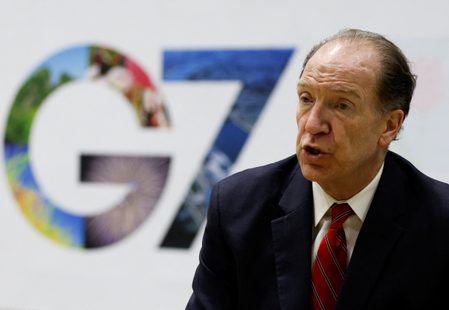SUMMARY
This is AI generated summarization, which may have errors. For context, always refer to the full article.

WASHINGTON, USA – The United States faces a “significant risk” of defaulting on payment obligations within the first two weeks of June without a debt ceiling increase, the Congressional Budget Office (CBO) said on Friday, May 12, adding that payment operations will remain uncertain throughout May.
The nonpartisan budget referee agency’s new estimate largely tracks Treasury Secretary Janet Yellen’s June 1 deadline for a potential default, underscoring the urgency of resolving a bitter standoff between Republicans and Democrats over raising the $31.4-trillion statutory borrowing cap.
Negotiations between White House officials and the staffs of congressional Republicans and Democrats are continuing, but a Friday debt limit meeting between President Joe Biden and top lawmakers was postponed until next week.
Republican US House of Representatives Speaker Kevin McCarthy said there had not yet been “enough progress for the leaders to get back together.”
The CBO’s report held out hope for more negotiating time, saying the Treasury can “probably” finance government operations through at least the end of July if available cash and extraordinary borrowing measures can last through June 15, when quarterly estimated tax payments are due.
On June 30, the Treasury will be able to access $145 billion in new extraordinary borrowing measures by suspending investments in two government employee retirement and health funds.
“The extent to which the government will be able to fund the government’s ongoing operations will remain uncertain throughout May, even if the Treasury ultimately runs out of funds in early June,” the CBO said in a statement.
“That uncertainty exists because the timing and amount of revenue collections and outlays over the intervening weeks could differ from CBO’s projections,” the CBO said.
The Treasury reported a cash balance of $154.8 billion as of Wednesday, May 10, and the CBO said it had about $41 billion of borrowing capacity under extraordinary measures as of April 30.
The CBO said that in mid-May the Treasury will make outlays of around $50 billion to cover interest due on 10-year notes and on longer-dated bonds, with $10 billion to $16 billion in outlays at the end of May.
On June 1, the government will likely pay out around $25 billion in Social Security payments and pay and benefits to military personnel and civil service employees.
‘Distress in credit markets’
Total resources needed to fund government operations through the end of the 2023 fiscal year on September 30 will be $1.9 trillion to $2.2 trillion, the CBO said. That is far higher than its estimate of about $500 billion in available cash from tax receipts and extraordinary borrowing measures during that same period, making a debt ceiling increase essential.
If the Treasury defaults on debt obligations or delays payments, “those actions could result in distress in credit markets, disruptions in economic activity, and rapid increases in borrowing rates for the Treasury,” the CBO said.
In a separate report, the CBO also revised upward its baseline budget deficit estimates, which reflect current law.
It said outlays for fiscal 2023 increased because of technical changes related to payments for student loan and other credit programs, along with higher projected spending on bank deposit insurance after recent bank failures, while outlays for the 2024-2033 period were reduced because of lower long-term projected spending on Medicare Advantage health coverage.
These changes increased CBO’s fiscal 2023 US deficit forecast by $130 billion compared to a February estimate to $1.539 trillion. The CBO’s estimated cumulative deficit through 2033 increased by $51 billion to $20.314 trillion. – Rappler.com
Add a comment
How does this make you feel?


![[OPINION] A rebellion long overdue](https://www.rappler.com/tachyon/2024/06/mass-uprising-matrix-june-4-2024.jpg?resize=257%2C257&crop_strategy=attention)








There are no comments yet. Add your comment to start the conversation.